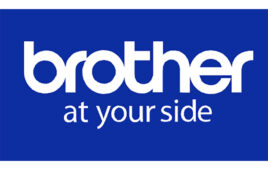An influx of deep-discount products is leading retailers to change the way they merchandise moist smokeless tobacco (MST) products, and experts are concerned that these changes are adversely affecting moist smokeless profitability.
As the deep-discount segment has grown in volume, it is compressing dollar sales and gross profit per transaction, forcing retailers to sell 1.5 cans of the deep-discount products in order to experience the same profitability from selling one can of premium moist smokeless tobacco products, a Willard Bishop study found.
In its study, “Examining Growth Opportunities in Moist Smokeless Tobacco,” Willard Bishop found retailers that aggressively expanded into the deep-discount segment of smokeless tobacco are surrendering penny profits and experiencing declining profitability. As a result, retailers who expanded into this price segment are beginning to rationalize assortment levels down in favor of premium products, like U.S. Smokeless Tobacco’s Skoal and Copenhagen and Conwood’s Kodiak, which offer high margins and intense drawing power.
“Retailers should have offerings within each of the price segments in MST,” the study said. “However, when they must make assortment decisions, we recommend that retailers consider the incremental value of an item. If profitability is the objective, clearly premium brands deliver higher profit.”
Analyzing unique MST transactions based on retail point-of-sale data, Willard Bishop discovered that premium customers purchase between 28% to 50% more cans per transaction than either price value or sub-price value. Premium MST transactions also generate 50% to 60% higher dollar sales versus the two other price segments.
The larger purchase quantity combined with higher retail prices generates a bigger dollar ring for Premium MST. “This is between 1.9 and 2.3 times higher than the other segments,” the study said. “These transactions also generate a higher ring related to non-MST products, particularly when compared to price value.”
Transactional analysis quantifies the value of the shopping trip versus simply the product. “Retailers can defend their base business, protect a valuable profit source and achieve profitable growth by excelling at delivering competitive value in the premium segment,” the report concluded.
Higher Penny Profit
Bishop also found that premium and sub-price value customers spend very similar dollar amounts on non-MST products per transaction. However, the penny profit potential is greater for premium “because these customers purchase higher gross margin products such as foodservice. As a result of stronger gross margins from ancillary purchases and the higher penny profit relative to MST products, transactions involving premium MST products generate 37% to 49% more gross profits than either price-value or sub-price value, respectively,” the report said.
In its retailer surveys, Bishop found that chains typically offered between 20 and 50 SKUs in the MST category. In stores where the assortment is present across all three price segmentspremium, price value and sub-price valuepremium MST represents more than 60% of the product mix, while price value (29%) and sub-price (11%) lagged far behind.
“The premium MST customer who visits a store frequently is a very profitable customer for the convenience retailer,” the report said. “Industry research shows that MST customers are visiting your stores around 12 times per month. They bring a large and very profitable market basket to your store every 2-3 days.”
The study also found that a relatively small number of products, about eight SKUs, drives more than half of the MST business. This underscores the need to keep products fresh and in stock.
Bishop and USSTC agree that growing the premium MST business requires an unrelenting focus on building sustainable growth. Category managers strive to this objective by developing:
- Volume-driven strategies designed to grow the core business and deliver greater value to adult consumers.
- Efficiency-driven strategies intended to improve profit per transaction and increase asset utilization.
Loyal Customers
In turn, these strategies help guide retailer emphasis on the various marketing elements based on the customer value proposition. Given that moist smokeless is becoming a more important part of the convenience business, retailers are urged to reexamine the category and assess how well their MST growth strategies align with their overall financial objectives.
“We know that the MST adult consumer is very loyal to their brand. Two-thirds of MST adult consumers have stated they would leave a store if their brand were not in-stock rather than switch to another brand. It is critical that retailers remain in-stock on the leading items to retain the customer loyalty and protect the profitable market basket associated with the MST purchase.”
With millions of adult smokers looking for a smoke-free tobacco alternative, USSTC is launching new and improved Skoal Bandits Mint and Wintergreen on August 14. The pouches will now be made using USSTC’s advanced Flavor Flow paper and will come in sleek, beveled cans with embossed metal lids and, for the first time, will feature the same “Guaranteed Fresh Until” date stamp on the bottom as other offerings in the Skoal line.
“With pouch products enjoying increased popularity among adult MST consumers portion packs are up 21.4% versus a year ago in c-stores*the time is right to introduce new and improved Skoal Bandits as a better MST option that fits a variety of lifestyles,” said Eric Fuller, USSTC’s senior brand manager.




